The American animator tells Gary Evans about the glory days at Disney… and why he had to quit his dream job

Aaron was promoted to supervising animator on The Lion King (1994). He was in charge of his own character, Simba’s best friend, the young Nala. The anatomy had to be perfect. This lion cub needed to move the way that lion cubs really move. So Aaron went to a kind of workshop, a kind of figure-drawing class, the kind of thing that could only happen at Disney during the 1990s.
These were different times. No internet, no video conferencing, no emailing images back and forth. Aaron worked at the Disney studio in Florida, but the California studio was also working on the movie. That’s a whole country, a whole timezone apart. Aaron photocopied his designs, numbered them and sent them by courier to Los Angeles. It was the same with tapes of animation. Meetings with directors took place on the phone the following day when the stuff arrived. By then, Aaron was on to something else. If things needed amending, he had to switch back to the previous design or animated clip. So a full week’s work might have equalled only a few seconds of finished movie; one or two shots. A film like The Lion King was 90 minutes long and contained 4,000 shots.
Before he could begin, Aaron needed to know the script inside-out. He needed to make sure that his designs matched up with the art director’s vision. And he needed Nala to be believable: a character, not a caricature. That, he says, was what Disney did well: it made believable characters by “pulling from reality.”
Esta historia es de la edición July 2019 de ImagineFX.
Comience su prueba gratuita de Magzter GOLD de 7 días para acceder a miles de historias premium seleccionadas y a más de 9,000 revistas y periódicos.
Ya eres suscriptor ? Conectar
Esta historia es de la edición July 2019 de ImagineFX.
Comience su prueba gratuita de Magzter GOLD de 7 días para acceder a miles de historias premium seleccionadas y a más de 9,000 revistas y periódicos.
Ya eres suscriptor? Conectar
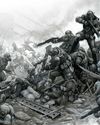
PAINT EPIC BATTLES IN TRADITIONAL INK
Warhammer illustrator THOMAS ELLIOTT shows you how to create an epic science fiction fight scene with this step-by-step guide
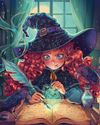
CONJURE MAGIC ILLUSTRATIONS
Daria Anako demonstrates her process for creating a whimsical piece of art with some spellbinding touches
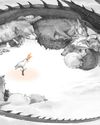
First Impressions
We discover the early influences that inspired the artist
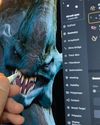
ZBrush for iPad
GAME CHANGER The desktop version of popular 3D sculpting software ZBrush has been redesigned for iPad - and it's brilliant

BenQ GW2786TC
GET AN EYEFUL Don't scrimp out on your health with a monitor that's kind on the eyes and good for creative tasks
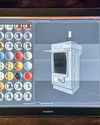
Huion Kamvas Pro 19
TABLET WARS An attractive pen display does an excellent job of balancing price and performance as it sets out to challenge its rivals in the mobile marketplace
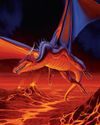
DRAGON OFORCEC
Legendary D&D artist Larry Elmore explains the keys to crafting timeless fantasy art.
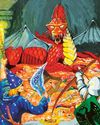
DUNGEON MASTERS
ImagineFX marks the milestone 50th anniversary of the launch of Dungeons & Dragons with a look at its rich tradition of illustration
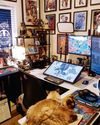
Erik Ly
Gamer's haven Why the artist enjoys a maximalist aesthetic more than the minimalist approach.
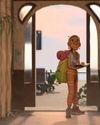
2D meets 3D: How the workflows are merging
Interdimensional As VFX and animation evolve and tools become more accessible, Tanya Combrinck asks whether the separation between the mediums is reducing